Olin is steeped in tradition from Convocation to the Olin barbeque on the first day of the semester, to graduation. Among the many traditions we have here is the QBA 121 – Managerial Statistics II poster session. The poster session has become synonymous with the end of the semester and the beginning of finals week. The poster session is the culmination of students’ semester-long projects applying statistical methods to problems of their choice. By allowing students to choose a topic to analyze, they realize how statistics apply to varied business decisions.
poster session. The poster session has become synonymous with the end of the semester and the beginning of finals week. The poster session is the culmination of students’ semester-long projects applying statistical methods to problems of their choice. By allowing students to choose a topic to analyze, they realize how statistics apply to varied business decisions.
The poster session is held in the Atrium of Knight and Bauer Halls. This semester visitors were intrigued by the multitude of projects on display. While the course focuses on the technical analysis of data and ensuing managerial implications, students’ projects are what make the poster session a success. 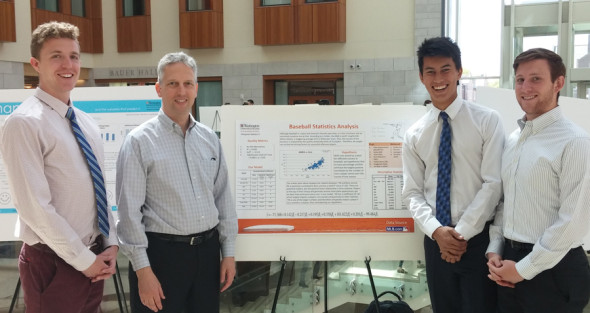 Projects vary widely, reflecting students’ varying interests; still they all have a common theme – apply statistical tools to generate managerial insight. Here’s a sampling of this year’s topics: What determines a WashU student’s happiness; Factors that influence salaries in professional sports; Is food at WashU expensive?; Determinants of literacy rates; and How to get more “likes” on Instagram.
Projects vary widely, reflecting students’ varying interests; still they all have a common theme – apply statistical tools to generate managerial insight. Here’s a sampling of this year’s topics: What determines a WashU student’s happiness; Factors that influence salaries in professional sports; Is food at WashU expensive?; Determinants of literacy rates; and How to get more “likes” on Instagram.
The Atrium provides an opportunity for visitors to be involved with the students’ projects. Some come every semester to see what’s new in the course. These include academic advisors, Olin faculty, and deans. They  question students on what they learned and how to apply their knowledge to real-world problems. Other visitors are just passing through. Among these are high school students contemplating whether to choose Wash U. Other visitors include classmates, students in other programs, and outside faculty. They all leave with a better understanding of how our students transform data into knowledge and a better appreciation of what goes on inside an Olin classroom. If you want to see more about the poster session, visit the QBA121 poster eBook for Spring 2015.
question students on what they learned and how to apply their knowledge to real-world problems. Other visitors are just passing through. Among these are high school students contemplating whether to choose Wash U. Other visitors include classmates, students in other programs, and outside faculty. They all leave with a better understanding of how our students transform data into knowledge and a better appreciation of what goes on inside an Olin classroom. If you want to see more about the poster session, visit the QBA121 poster eBook for Spring 2015.
Blog post by Eli Snir, Senior Lecturer in Management
Related post: Running stats for real by Andrian Lee, BSBA’17


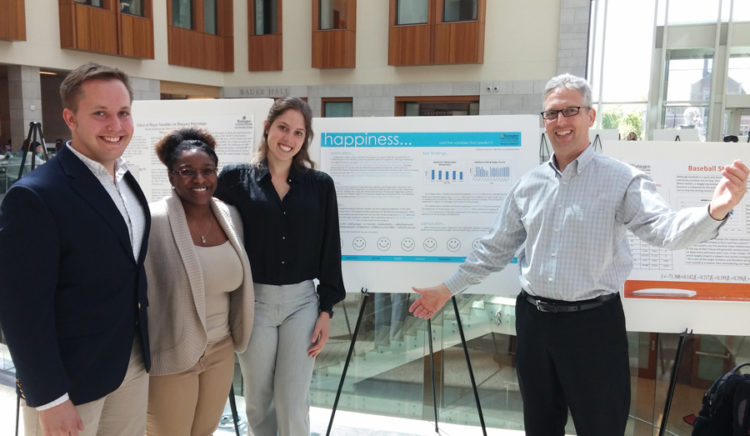
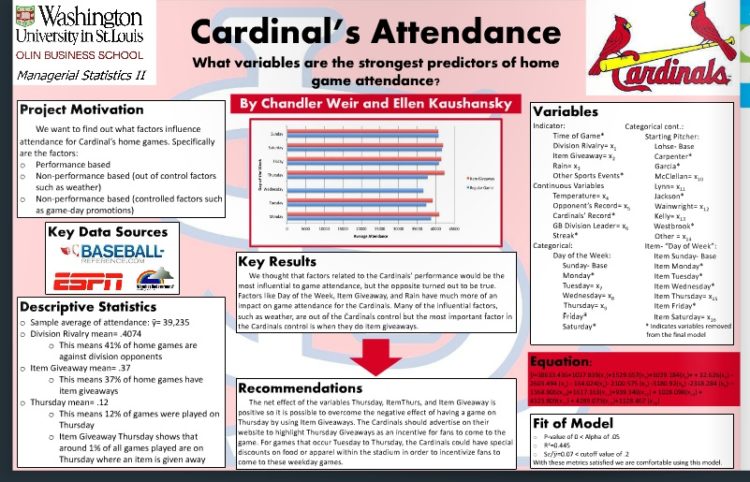
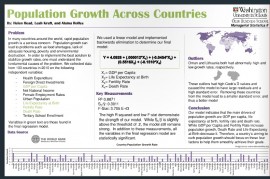 One of the goals of the course is to demonstrate the broad applicability of statistics, and specifically of regression analysis, to any area of interest. And the term papers reflect that. They are as broad and as encompassing as the university, drawing on nearly every discipline taught here.
One of the goals of the course is to demonstrate the broad applicability of statistics, and specifically of regression analysis, to any area of interest. And the term papers reflect that. They are as broad and as encompassing as the university, drawing on nearly every discipline taught here.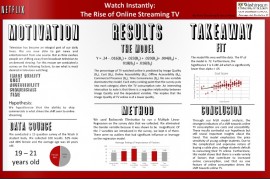 Students are expected to explain their analysis to various constituents, some desire a qualitatively understanding while other challenge students on statistical methodology. Invariably, students in the course address all questions comprehensively and confidently.
Students are expected to explain their analysis to various constituents, some desire a qualitatively understanding while other challenge students on statistical methodology. Invariably, students in the course address all questions comprehensively and confidently.